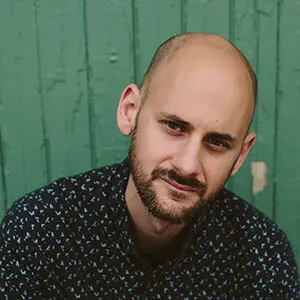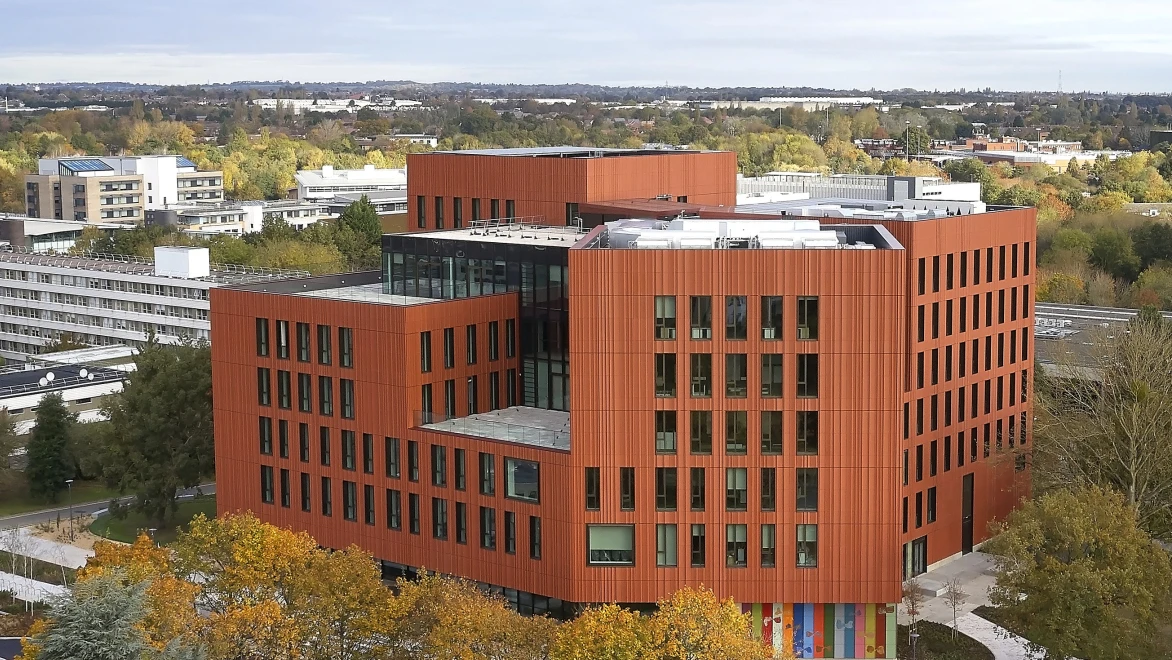& Construction

Integrated BIM tools, including Revit, AutoCAD, and Civil 3D
& Manufacturing

Professional CAD/CAM tools built on Inventor and AutoCAD
The necessary push toward a carbon-neutral built environment will require unprecedented infrastructure upgrades. The architecture, engineering, construction, and operations (AECO) industry and the schools that support it are facing an uncomfortable fact: “As a nation, we’re nowhere near able to produce the number of individuals with the required technical skills that are needed for the AECO industry,” says John Anderson, Dean of Howard University’s College of Engineering and Architecture. “It’s a huge gap.”
Educators need to embrace AI and digital design tools “to create the AECO workforce that’s necessary for achieving the nation’s evolving sustainability goals for the built environment,” he says. “I don’t know how it would happen otherwise.” For Anderson, AI is a teaching tool that can help students learn faster, an efficiency booster that allows engineers and designers to apply their talents where they’re most irreplaceable.
In June, Autodesk delivered a $5 million gift to Howard University’s College of Engineering and Architecture, the largest unrestricted philanthropic donation in the College’s history. The investment will help develop a state-of-the-art Design and Make Lab. This new 2,500-square-foot facility will contain a digital design lab, maker space, and classroom space, and will host K–12 STEM activities. Installing facilities like these in the nation’s most storied historically Black university could go a long way toward diversifying fields that remain monolithically white. Only 3% of mechanical engineers and 2% of architects are Black.
“It’s a space that integrates the design, the making, and the learning,” Anderson says. “In a perfect world, our students could go from a customer who has some need, to developing some specs from interacting with that customer, to designing a prototype.”
Beyond connecting designers with customers, Anderson (who holds a doctorate in electrical engineering) wants this lab to be a hub for interdisciplinary collaboration. “The idea is to use this as a driver for bringing together parts of the university that may not always necessarily have that opportunity, where, for example, you can have School of Business students and computer science and engineering students working together to achieve some sort of objective.”
That’s something like how he came to electrical engineering himself. His father, a medical doctor and Howard undergrad who passed away when Anderson was seven, left behind small electronics kits (resistors, capacitors, etc.). He’d been taking a correspondence course. It wasn’t until much later that Anderson realized what these things were, and that discovery helped set his career in motion.
Howard’s College of Engineering and Architecture emphasizes digital design with an introduction to machine learning course for both undergrads and graduate students. In addition to the Design and Make Lab, the school runs a whole language model lab (in which AI features prominently in work performed there), and government sponsors and industry partners fund undergraduate and graduate research.
Customarily, a curriculum is driven by faculty who are active researchers in their fields. “It’s not anything that comes from a dean’s level,” says Anderson. “It’s very much the departmental-level faculty who are recognized as leaders within that department, working with the curriculum committee and other faculty to really think about how we can best prepare our students so that they’re not losing out on opportunities. We’re not as large as Cornell, MIT, or Purdue, so we are always trying to punch above our weight.” He explains that the extent the school is able to do that often comes with partnerships, like with Autodesk. “That’s to try to give our students the greatest range of opportunities that we're able to with our current level of resources.”
Taking the next step in the evolution of AECO in academia means widening the expertise around architects and engineers in multidisciplinary settings—and also widening the capacity of educational institutions themselves, hence the need for new digital teaching tools. Anderson sees the potential in AI to create personalized and reactive tools that respond to students’ knowledge with lessons plans assembled and presented on the fly. These tools could communicate via text and image, compare and contrast different solutions, and dynamically align student learning with course goals in a personalized way, “to push them if they are doing really well and pull them in if they’re not,” he says.
As an educator himself, Anderson understands that STEM educators must be careful of turning too much of their responsibility over to AI. “Trying to walk that tightrope, I think, is going to be a part of STEM education in the future,” he says. “How are you going to take advantage of these tools, but then ensure that they’re not abused, ensure that students actually understand when something is wrong so you’re not using something blindly?”
AI can assist architecture, computer science, and engineering with repetitive, granular details that are important and time-consuming but don’t otherwise develop the concept and overall inspiration for a building or project. “You don’t need to spend two hours trying to get the code right for some small piece of a bigger picture,” Anderson says. “That allows you to think more broadly and more creatively about the entirety of the solution that you’re trying to develop.”
One—often neglected—area of design Anderson thinks can benefit from AI is gathering community outreach and input. This process is inherently time consuming, imprecise, and decidedly non-digital. But it’s still vital. In a health care setting, “I would spend more time immersing myself in the current setting and trying to really absorb information from patients, health professionals, the maintenance crew, and the custodians,” he says.
The key to effectively embedding any project in a community hinges on creating a rapport of trust and transparency with the people that will use it. This step will help uncover the community’s nuanced needs and desires for the space. Talking to clients and community members about what doesn’t work in their current space and how it can be fixed is a much better application of design talent than spending time on tasks like labeling elements of a 3D model, for example.
Similarly, Anderson sees the relative drudgery of maintenance as a fertile field for AI. Trained on past performance data, an AI algorithm could predict when public infrastructure, such as an escalator or subway car, is likely to break down, with staff, equipment, and repair parts ready to go. “Now, instead of waiting for it to fail and then sending out a team to fix it, you have a team go out 12 o’clock at night and do the preventive maintenance so that you’re avoiding the escalator failing,” he explains. “And now you’re having much better throughput, you have more happy customers.”
In an educational setting, the value of AI isn’t just measured in pure expediency. Students, Anderson says, can benefit greatly from seeing many different ways to solve a given problem. “The fact that you can create something very easily,” he says, “is a way to think more in depth about how your design came about, which would be a gratifying outcome of AI.”
Zach Mortice is an architectural journalist based in Chicago.
Autodesk Customer Success Story
Image courtesy of Huftonand Crow.
Education
AECO






